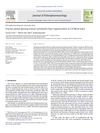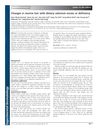Search
forLearn
5 / 5 resultslearn sh-Polypeptide-7
learn Neem Oil
natural substance from Neem tree with medicinal and pesticidal properties
learn Osteopontin
signaling protein that, when suppressed, may grow hair by reducing inflammation and stem cell loss
learn Stem Cell Factor
Research
5 / 1000+ resultsresearch Hydroxyl Radical Mediates Cisplatin-Induced Apoptosis in Human Hair Follicle Dermal Papilla Cells and Keratinocytes Through Bcl-2-Dependent Mechanism
Hydroxyl radicals cause hair follicle cell death during chemotherapy by reducing Bcl-2 protein levels.

research Septin4 Promotes Cell Death in Human Colon Cancer Cells by Interacting with BAX
Septin4 helps kill colon cancer cells by working with the protein BAX.
research The Dual Role of Stem Cell-Specific Bcl-2 Function for Epidermal Regeneration and Cancer
Bcl-2 helps hair regeneration but can also increase cancer risk.

research Fructus Panax Ginseng Extract Promotes Hair Regeneration in C57BL/6 Mice
Panax ginseng extract helps mice grow hair.

research Changes in Murine Hair with Dietary Selenium Excess or Deficiency
Too much or too little selenium in the diet can cause hair loss and graying in mice.
Community Join
5 / 346 resultscommunity So we have 20k dollars human like machines available but no new effective treatment for hairloss since finasteride :)
There have been no new effective hair loss treatments since finasteride, despite technological advancements. Current treatments include finasteride, minoxidil, and RU58841, with ongoing challenges and potential future solutions in research.

community Compressed part of research of theory of androgenic/anabolitic balance. AGA h-responders analytic. Theory of physio-metabolitic method of anti AGA treatment
The treatment for androgenetic alopecia involves using finasteride and minoxidil with intense exercise and cold exposure to boost metabolism and reduce androgenic effects, potentially leading to hair regrowth. This approach may activate biological pathways for improved hair and overall health.
community HLT Megathread on HMI-115 (key takeaways in comments)
HMI-115, a newly discovered hair loss treatment that could potentially be effective for those with diffuse thinning and telogen effluvium. It is based on prolactin receptor antagonist signaling and has already undergone Phase I trials in women, with potential commercialization by 2027.
community Brief summary of new dutasteride study linked to infertility and the limitations/problems with the study
Dutasteride treatment may decrease sperm concentration, but levels remain above WHO recommendations and recover after discontinuation. The study has limitations, including small sample size and lack of pre-treatment sperm data, and does not assess other fertility factors.
community Sandalore: a scientific homemade approch
The post discusses using Sandalore as a potential hair loss treatment, emphasizing precise measurements and safe handling. The user compares Sandalore's effects to Minoxidil and mentions preparing a solution with ethanol and DMSO.